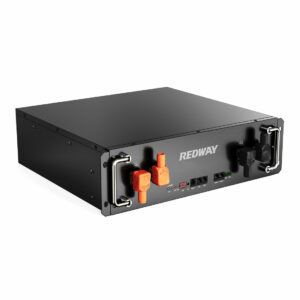How big of a battery bank do I need to be off-grid?
To determine off-grid battery bank size, calculate daily energy consumption (kWh), multiply by days of autonomy (3–7 days), and adjust for battery depth of discharge (DoD) and inverter efficiency. For example, a household using 10 kWh/day with 3-day autonomy and 50% DoD requires a 60 kWh lithium battery (10×3÷0.5). Lead-acid batteries need 20–30% more capacity due to lower DoD (30–50%). Prioritize lithium-ion (LiFePO4) for longevity and compactness.
How is energy consumption calculated?
Energy audits quantify daily usage by summing appliance watt-hours. For critical loads (fridge, lights, pumps), track runtime via smart meters or manufacturer specs. Pro Tip: Add 15–20% buffer for inefficiencies. Example: A 500W fridge running 8 hours daily consumes 4 kWh (500W×8h).

Accurate calculations prevent undersizing. Start by listing all devices—lights (10W×5h=0.05kWh), well pump (1,000W×1h=1kWh), etc. Multiply individual consumption by quantity and sum totals. Transitional tools like Kill-A-Watt meters simplify this. But what if usage fluctuates seasonally? Design for peak demand—summer cooling or winter heating often doubles needs. A 2,000 sq. ft. home typically uses 20–30 kWh/day. Always verify with historical utility bills if available.
What autonomy period is realistic?
3–5 days balances cost and reliability. Solar systems recharge batteries in 2–3 sunny days. In low-sun regions (e.g., Pacific Northwest), extend to 7 days. Example: A 20 kWh battery with 3-day autonomy supports 6.7 kWh/day loads.
Autonomy depends on local weather and rechargeability. Systems with generator backups can reduce autonomy to 1–2 days. Practically speaking, lithium batteries handle deeper discharges, allowing shorter autonomy than lead-acid. For hurricane-prone areas, 7-day reserves are advisable. Transitionally, hybrid systems (solar + wind) enhance recharge rates, permitting smaller banks. How much is too much? Beyond 7 days, costs rise exponentially—diminishing returns start at 50 kWh for most homes.
| Scenario | Recommended Autonomy | Battery Size (LiFePO4) |
|---|---|---|
| Mild climate | 3 days | 30 kWh |
| Storm-prone | 7 days | 70 kWh |
How does DoD affect capacity?
Depth of discharge (DoD) dictates usable energy. Lithium permits 80–90% DoD; lead-acid limits to 50%. A 10 kWh lithium bank delivers 8–9 kWh, while lead-acid provides 5 kWh. Pro Tip: Never exceed DoD limits—premature aging occurs.
DoD directly impacts cycle life. LiFePO4 batteries endure 3,000–6,000 cycles at 80% DoD versus 500–1,000 cycles for lead-acid at 50%. Transitionally, higher DoD reduces physical space needs—a 48V 200Ah LiFePO4 (9.6 kWh) equals 24V 400Ah lead-acid (9.6 kWh) in capacity but occupies half the room. But what if partial discharges occur? Lithium’s “memory effect” resistance makes it ideal for irregular usage. Always pair DoD with temperature compensation—cold reduces effective capacity.
Why prioritize lithium over lead-acid?
Lithium-ion batteries offer 95% efficiency, 10+ year lifespans, and 3× energy density. Lead-acid requires ventilation, frequent equalization, and 2× physical space. Example: A 10kWh LiFePO4 system fits in 2 sq. ft.; lead-acid needs 5 sq. ft.
Beyond efficiency, lithium supports modular expansion—add batteries seamlessly. Lead-acid demands entire bank replacement for upgrades. Transitionally, lithium’s flat discharge curve maintains stable voltage, unlike lead-acid’s voltage sag below 50% charge. For off-grid setups, this ensures consistent inverter performance. How critical is weight? Lithium weighs 1/3 of lead-acid—essential for rooftop or mobile installations. However, initial costs are 2–3× higher, offset by long-term savings.
| Parameter | LiFePO4 | Lead-Acid |
|---|---|---|
| Cycle Life | 3,000–6,000 | 500–1,200 |
| Efficiency | 95–98% | 70–85% |
RackBattery Expert Insight
FAQs
Can I mix battery types in a bank?
No—different chemistries have varying voltages and charge rates. Mixing causes imbalances, reducing lifespan and safety.
What inverter size pairs with 20kWh battery?
A 5kW continuous inverter handles most homes. Match surge ratings to motor starts (e.g., 10kW surge for well pumps).



